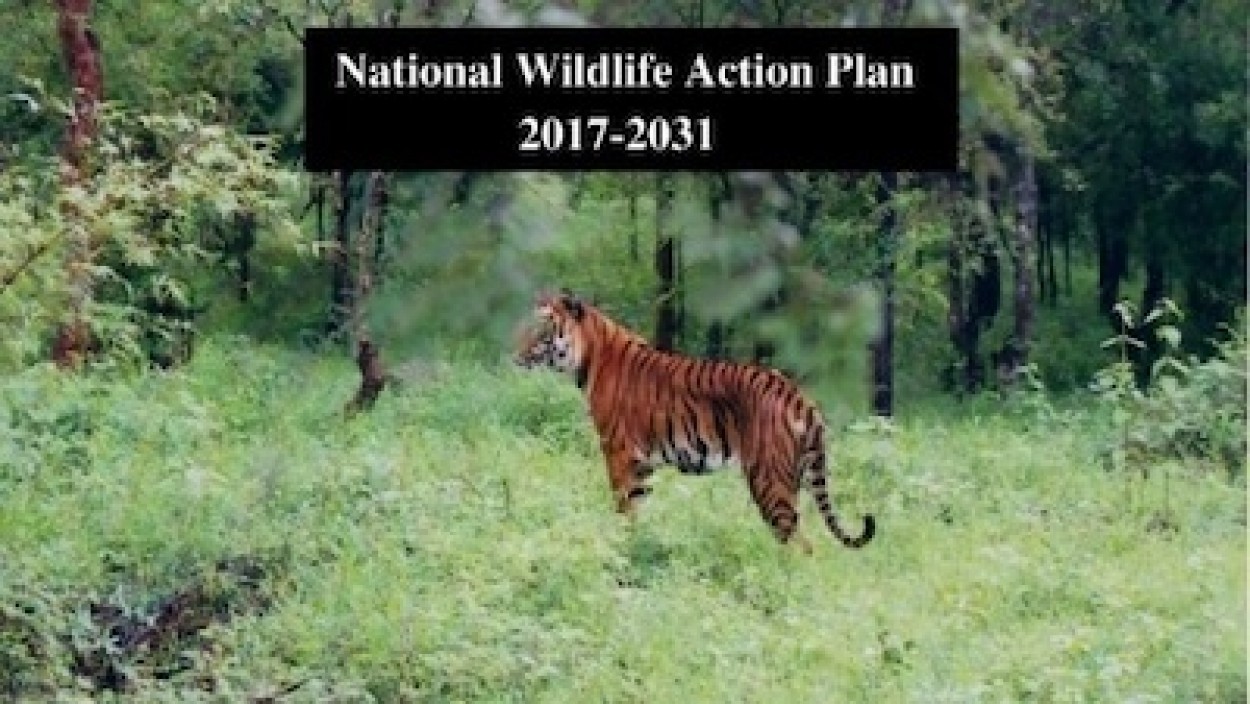- Home
-
प्रमुख समाचार
 Guidelines and SOPs for Blood Transfusion and Blood Banks for Animals released by GOI
Guidelines and SOPs for Blood Transfusion and Blood Banks for Animals released by GOI
Pashu Sandesh, 25 August 2025 …
 भारत में चारा प्रणालियों को मजबूत करना: प्रभावी प्रबंधन और खाद्य सुरक्षा के लिए एक खाका
भारत में चारा प्रणालियों को मजबूत करना: प्रभावी प्रबंधन और खाद्य सुरक्षा के लिए एक खाका
Pashu Sandesh, 25 August 2025
-
बड़े मुद्वे
 Victory for UP Vets as Government agrees to table NPA proposal within one month in the cabinet meet
Victory for UP Vets as Government agrees to table NPA proposal within one month in the cabinet meet
Pashu Sandesh, 04 October 2017
-
एक्सक्लूसिव रिपोर्ट
 Veterinary Associations of India- Himachal Pradesh Veterinary Officers Association (HPVOA)
Veterinary Associations of India- Himachal Pradesh Veterinary Officers Association (HPVOA)
Pashu Sandesh, 26 October 2017
-
डेयरी
-
कैंपस
-
पोल्ट्री
-
वाइल्ड लाइफ
 The valedictory ceremony of the Wildlife week organised at National Zoological Park Delhi
The valedictory ceremony of the Wildlife week organised at National Zoological Park Delhi
Pashu Sandesh, 8 October 2021
 राष्ट्रीय प्राणी उद्यान, दिल्ली में आयोजित 67वें वन्यजीव सप्ताह का समापन समारोह
राष्ट्रीय प्राणी उद्यान, दिल्ली में आयोजित 67वें वन्यजीव सप्ताह का समापन समारोह
Pashu Sandesh, 8 October 2021
-
एनिमल वैलफेयर
 पशु प्रेमियों द्वारा शहर में पशु टीकाकरण कार्यक्रम में चारु चौधरी ने महिला प्रकोष्ठ के लिए अनुपमा द्विवेदी के नाम घोषित किया-इस अवसर पर एडबलूबीआई,…
पशु प्रेमियों द्वारा शहर में पशु टीकाकरण कार्यक्रम में चारु चौधरी ने महिला प्रकोष्ठ के लिए अनुपमा द्विवेदी के नाम घोषित किया-इस अवसर पर एडबलूबीआई,…
Pashu Sandesh, 02 July 2025 गोरखपुर (उत्तर प्रदेश):…
 लखनऊ शहर में बेसहारा पशुओं के लिए 'जीव आश्रय'एक आशा की किरण,संस्था ने गत वर्ष 141,536 से अधिक जानवरों को बचाया
लखनऊ शहर में बेसहारा पशुओं के लिए 'जीव आश्रय'एक आशा की किरण,संस्था ने गत वर्ष 141,536 से अधिक जानवरों को बचाया
Pashu Sandesh, 05 April 2025 डॉ. आर.बी. चौधरी…
 समस्त महाजन जल्द ही 2 एम्बुलेंस के साथ 24 घंटे पशु बचाव सेवा शुरू करने जा रहा है - राष्ट्रीय राजधानी में अपनी तरह की…
समस्त महाजन जल्द ही 2 एम्बुलेंस के साथ 24 घंटे पशु बचाव सेवा शुरू करने जा रहा है - राष्ट्रीय राजधानी में अपनी तरह की…
Pashu Sandesh, 20 December 2024 “यदि सभी पशु…
 गोबर- गोमूत्र से गांव की अर्थव्यवस्था सुधारने मैं जुटी एक स्वयंसेवी संस्था समस्त महाजन के उपलब्धियां पर महान हस्तियों की नजर
गोबर- गोमूत्र से गांव की अर्थव्यवस्था सुधारने मैं जुटी एक स्वयंसेवी संस्था समस्त महाजन के उपलब्धियां पर महान हस्तियों की नजर
Pashu Sandesh, 10 Sep 2024 Dr R B…
 गोवंश को राष्ट्रीय पशु घोषित कराने के लिए राष्ट्रव्यापी अभियान
गोवंश को राष्ट्रीय पशु घोषित कराने के लिए राष्ट्रव्यापी अभियान
Pashu Sandesh, 27 November 2022 ओसियां…
-
रोजगार
-
राज्यों की खबरें
-
पेट केयर
 Why Does Leptospira Persist In The Kidneys Of Carrier Animals?
Why Does Leptospira Persist In The Kidneys Of Carrier Animals?
Pashu Sandesh,04 September 2017 Parvinder Kaur Lubana…
-
किसान कैफ़े
 अदरक और हल्दी की खरीद और विपणन के लिए समझौता ज्ञापन पर हस्ताक्षर
अदरक और हल्दी की खरीद और विपणन के लिए समझौता ज्ञापन पर हस्ताक्षर
उत्तर प्रदेश के किसानों की टीम "रूरल हब"…
-
आई सी ए आर
- महत्वपूर्ण लिंक

National Wildlife Action Plan 2017-2031: Salient Features
Pashu Sandesh, 09 January 2019
The National Wildlife Action Plan (2017-2031) of the Ministry of Environment, Forest and Climate Change, has been made with a view to have concerted approach for protection, conservation and management of wildlife through out the country. The Action Plan is pided into 17 chapters that also includes Chapters on ‘Strengthening and Improving Protected Area network’; ‘Control of Poaching and Illegal Trade in Wildlife’; and ‘People’s Participation in Wildlife’; ‘Management of Tourism in Wildlife Areas’. These Chapters takes note of use of modern technology and involvement of people in wildlife conservation including tourism in wildlife areas.
Man-animal conflict mitigation, adapting to the climate change, managing eco-tourism, ensuring public participation in the conservation, developing human resources, strengthening research and monitoring through modern technology like radio collars and drones and ensuring fundings for the wildlife sector have been given special thrust in the planning
It gives a special emphasis to the recovery of threatened species of wildlife while conserving their habitats.
The government has also stressed on an increase in the role of private sector in wildlife conservation.
According to the plan the onus of ensuring adequate and sustained funding for the National Wildlife Action Plan implementation including Corporate Social Responsibility funds was on the government.
The National Wildlife Action Plan (2017-2031) is the third Plan. The Government had previously brought out National Wildlife Action Plan in 1983 and 2002.





























































